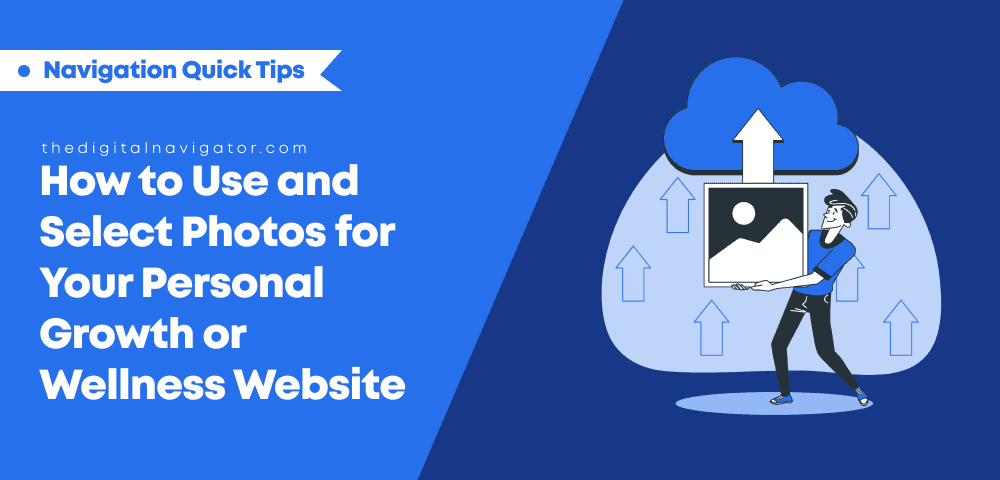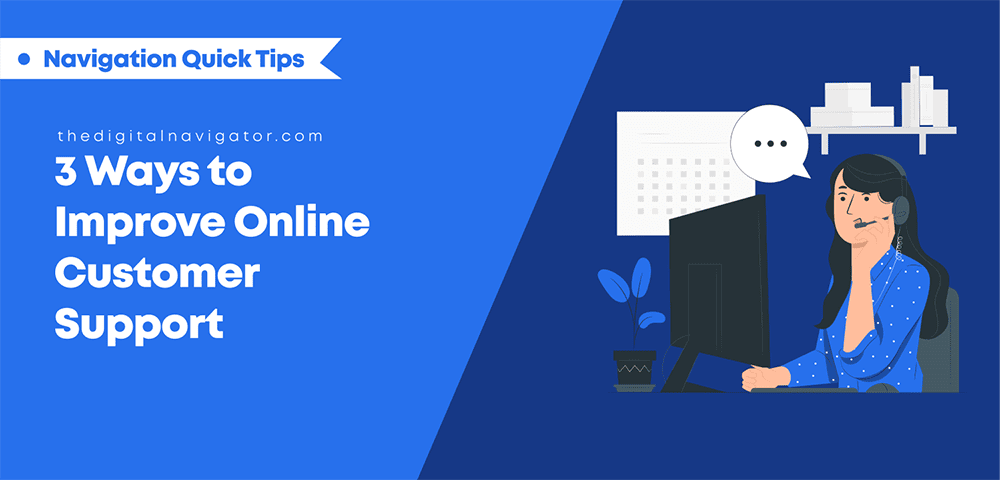How to Use and Select Photos for Your Personal Growth or Wellness Website
Reading Time: 8 minutes
Learn the best images to use for your website for consistent website branding and alignment throughout your online business site.
Although stock photos and images are effective when properly used, you can gain an edge by adding unique photos to your mix.
By using personalized images taken by a photographer, or just a member of your team, you’ll have a way better chance to boost the visual appeal of your site for more program sales…
…while also creating an inclusive online environment that aligns with your website’s goals and message!
Table Of Content
- Introduction
- 6 Tips to Choosing the Best Images for Your Website
- 1. Prioritize diversity to make your site inclusive
- 2. Avoid uniformity to keep your site exciting
- 3. Incorporate unique visual elements related to your brand
- Check for consistency between photos and webpages
- Optimize your photo files for upload to keep site speed fast
- Use responsive design for an improved user experience
- What do I do once I’ve uploaded my photos and images?
But the main (and most important) benefit to using photos and images that are in alignment with your business?
Authenticity and trust!
That’s because when you are using images of your team, your face, your products, and real images of clients beside testimonials, viewers are more likely to view you as an expert or professional in your field.
It also shows that you’re dedicated to taking care with your business, which implies that you’ll be showing the same care and attention with your clients and students.
The only question is, how do you select photos to use for an online business site–particularly ones that are geared towards course creation, life coaching, spiritual mentorship, or personal growth?
Here are five tips you can use to make sure you select the right photos for your dream business website:
6 Tips to Choosing the Best Images for Your Website
You might think the first step is to take the photos you want to take, but the best way to find images for your website involves a little more than that.
If you just jump into the process without thinking a little more about what value the photos will bring to your site, you’ll likely miss out on important sales opportunities for your business.
So, what images can you use on your website?
To start, we suggest you define the purpose and message of your photographs before you take or select them.
That’s why we recommend you…
- Clearly identify the purpose and message you want your website to convey.
- Determine the role your photos/images will play in supporting your website’s objectives.
- Brainstorm photo ideas that align with your website’s goals and content to ensure that the visuals support and enhance the overall message you want to convey.
Once you know exactly why you want the photos you’re choosing, then you can begin taking or selecting images based on the following tips from our marketing specialists:
1. Prioritize diversity to make your site inclusive
Knowing that adding human faces to your site can create a sense of community for your brand, and that your team members or founders’ faces are a great source for photo subjects, it’s always important to see where you can include more diversity in your photos.
And we’re not just talking about skin color–diversity comes in all shapes and sizes!
That means looking at different genders, abilities, clothing styles, hairstyles, and even different backgrounds to broaden the representation of your brand to your target audience. The contrast of darker and lighter shots also makes it easier to incorporate different page layouts.
2. Avoid uniformity to keep your site exciting
When choosing the best images for your website, don’t choose photos that basically show the same thing, or which don’t contrast the existing design of your business website well.
When you have photos that are too uniform, they will ultimately give a flat feeling to your products and services.
If you instead choose photos and images with vitality, contrast, and color, your photos will have a greater impact on site visitors, making them more likely to stop and look!
Free On-Demand Masterclass
4 Steps to Build a Lucrative Marketing Funnel for Course Creators, Coaches and Spiritual Teachers

Incorporate unique visual elements related to your brand
Enhance the visual appeal of your photos by adding unique elements like unusual shapes, lamps, plants, crystals, or other distinctive objects to engage your audience. The more closely the object relates to your brand or business, the better!
If you’re stuck for ideas about what to take photos of, we recommend exploring the assets or products you have that can be photographed, for instance a print version of your eBook, or a photo of your cellphone with your app or community appearing on-screen.
You can also include animals in your shots to create positive emotional responses. This works best with ‘cute’ or ‘friendly’ animals like dogs or cows, so you might want to leave your snakes, lizards, and crocodiles at home unless they’re related to your business.
Check for consistency between photos and webpages
Often when people are looking to add photos to their website, they already have a few photos that they’ve chosen to represent their brand that are viewable to users.
If you have photos already on your website, it’s a good idea to make sure any new photo selections are consistent with the style and tone of your other photos. That’s because you want people to feel they have entered a truly curated space online! A sudden unexpected change in style or feel could confuse your visitors.
It’s up to you whether you would want to go back and replace older photos for more consistency with your new ones, so long as you ensure that your visual assets flow seamlessly throughout your website–from landing page to thank-you page.
Optimize your photo files for upload to keep site speed fast
If you have too many photos on one page, or if you’re finding images and adding photos that have a huge pixel count or file size, you’re going to end up slowing down your website.
To help, before uploading your photos, compress your images online, resize them as needed, and use file formats that are easily recognized by website management software, such as JPEG or PNG formats. At The Digital Navigator we utilize RIOT, a free image compression software for Windows.
Go the extra mile by serving modern ultra-compressed formats that don’t reduce image quality such as WEBP and AVIF images when supported by the visitor’s browser.
HINT: When it comes to uploading your photos online, make sure you’re using responsive design techniques like scalable images or lazy loading to ensure your photos adapt to different screen sizes and devices. If you’re unsure how, just ask your developer, or reach out and schedule a free consultation with us to find out how we can help.
Optimize Lead Generation
How to Reduce Bounce Rate and Increase Conversions | 11 Tips for Success

Use responsive design for an improved user experience
Here, we simply recommend you Implement responsive design techniques when you take your photos, to ensure they adapt to different screen sizes and devices. That way you can showcase the whole image, no matter how your visitors access your site.
The easiest way to do this is to take a landscape shot while centering your subject so that it can also be cropped to make a vertical image.
You might also consider taking photos in portrait, landscape, and in a manner that can easily be cropped into a square to help diversify your capacity to use the same photo across different platforms.
What do I do once I’ve uploaded my photos and images?
Once you’ve curated a series of images that align with your brand, and have uploaded them to your online business website, it’s time to make sure that your selections are attractive to the real users visiting your website.
That’s why we recommend you not only test the impact of your selected photos by gathering user feedback (and adjusting as necessary), but also monitor your photos and images on a regular basis. You can use heatmap tools such as the one included in The Digital Navigator Private Analytics platform or Hotjar to measure the impact of your images on the behavior of visitors.
That means, anytime you make a big adjustment to your content strategy, business model, or site structure, you can also check in with your visuals to make sure they remain aligned and consistent with your evolving goals.
And although it is a process that you may evolve once a year to keep your site fresh, from the tips and tricks above, selecting and using the right images on your site will become a breeze as you get more clear about your brand, and what value you bring to clients and students online.
Feeling comfortable with your photos, but aren’t sure where to place them on the page? Schedule a free consultation with our marketing experts and we can give you on-the-spot feedback about your current site, and help you explore different design options moving forward–no obligation necessary!
If that’s not your style, then at least check out our master guide for How to Use a UI Kit for the Best User Experience, and our High-Converting Landing Page Checklist for more information on how to design the best web pages for your program sales.








0 Comments